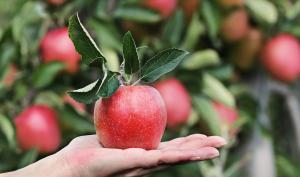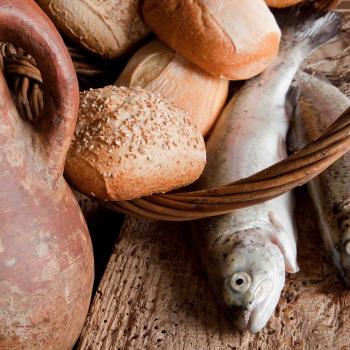 It’s not the first food mentioned in the Bible, but it may be one of the most famous foods in history — the forbidden fruit.
It’s not the first food mentioned in the Bible, but it may be one of the most famous foods in history — the forbidden fruit.
So when the woman saw that the tree was good for food, that it was [a]pleasant to the eyes, and a tree desirable to make one wise, she took of its fruit and ate. She also gave to her husband with her, and he ate. — Genesis 3:6 (KJV)
Nobody can say for sure what the fruit that Adam and Eve consumed, but at some point along the way, the apple became the go-to fruit for bringing shame to the couple and their subsequent banishment from the Garden of Eden. We can thank translations and culture for eventually making the apple the center of attention.
In fact, the apple we enjoy today was very unlikely to be the fruit from the Tree of Knowledge. The Hebrew word peri was the original one used in Genesis, and it is a generic term for fruit. It’s believed that when the Bible was translated into Latin, the word malum was used, and the English word for that is apple. However, the word apple in those times was a generic term for fruit and nuts, except for berries.
The Quran also makes no mention of an apple and states that Adam and Eve were instructed that they may eat anything in Paradise save for one tree.
Lots of fruits used the word apple in their descriptions in history. Tomatoes? Love apple. Potatoes? Ground apples. Peach? Persian apple. Pomegranate? Seedy apple. Dates? Finger apple. Cucumbers? Earth apple. Pineapple? Uh, well, pineapple. The last one actually comes from the Middle Ages term for pinecone (pineappel) and was likely given to the modern pineapple based on appearance.
The apple likely got its place as the forbidden fruit thanks to paintings and other art. Many artists chose the apple, but apricots and pomegranates have also appeared in items depicting the Garden of Eden. The forbidden fruit could have been a number of fruits that were common to the area at the time the Bible was written, such as figs, grapes, citron, or even wheat.
Christianity is not the only religion that depiction of apples. Ancient Greeks believed that Dionysus, the god of wine, fertility, and theater, was the creator of the apple, which he presented to Aphrodite. The garden of the goddess Hera contained the Golden Apples of Hesperides. Both of these made apples the symbol of fertility and apple trees were viewed as sacred.
The delicious combination of apples dipped in honey is one of the foods of Rosh Hashanah, which is celebrated 163 days after the first day of Passover. This year it begins on the evening of September 25 and ends on the evening of September 27. Rabbi Shimon Apisdorf, in a post about the holiday, explains their use, “On most fruit trees the leaves appear before the fruit, thus providing a protective cover for the young fruit. The apple, however, makes a preemptive move by appearing before the leaves. The Jewish people are compared to an apple because we are willing to live out our Jewish lives even if this seems to leave us unprotected. We have confidence that God and the instructions in the Torah could never mislead us. A bee can inflict pain by its sting, yet it also produces delicious honey. Life has this same duality of potential.”
The Apple Feast of the Savior is one of three Feasts of the Savior in Russian Orthodox Christianity, although it was a celebration before Christianity. It is celebrated every August 19th and people bring fruits to the church to be blessed and then enjoyed. The other two feasts are the Honey Feast of the Savior and the Nut Feast of the Savior. You may also notice that honey frequently makes an appearance in religion. I will be covering that food in a future post.












